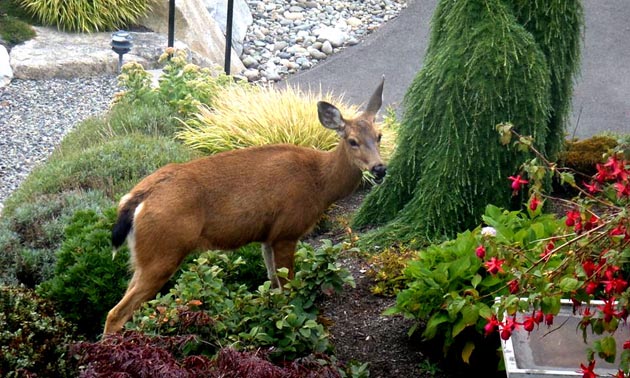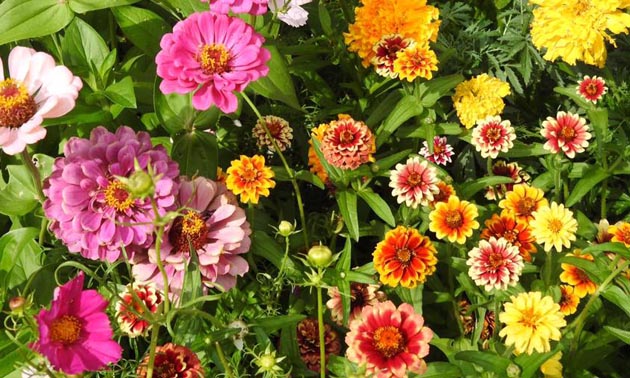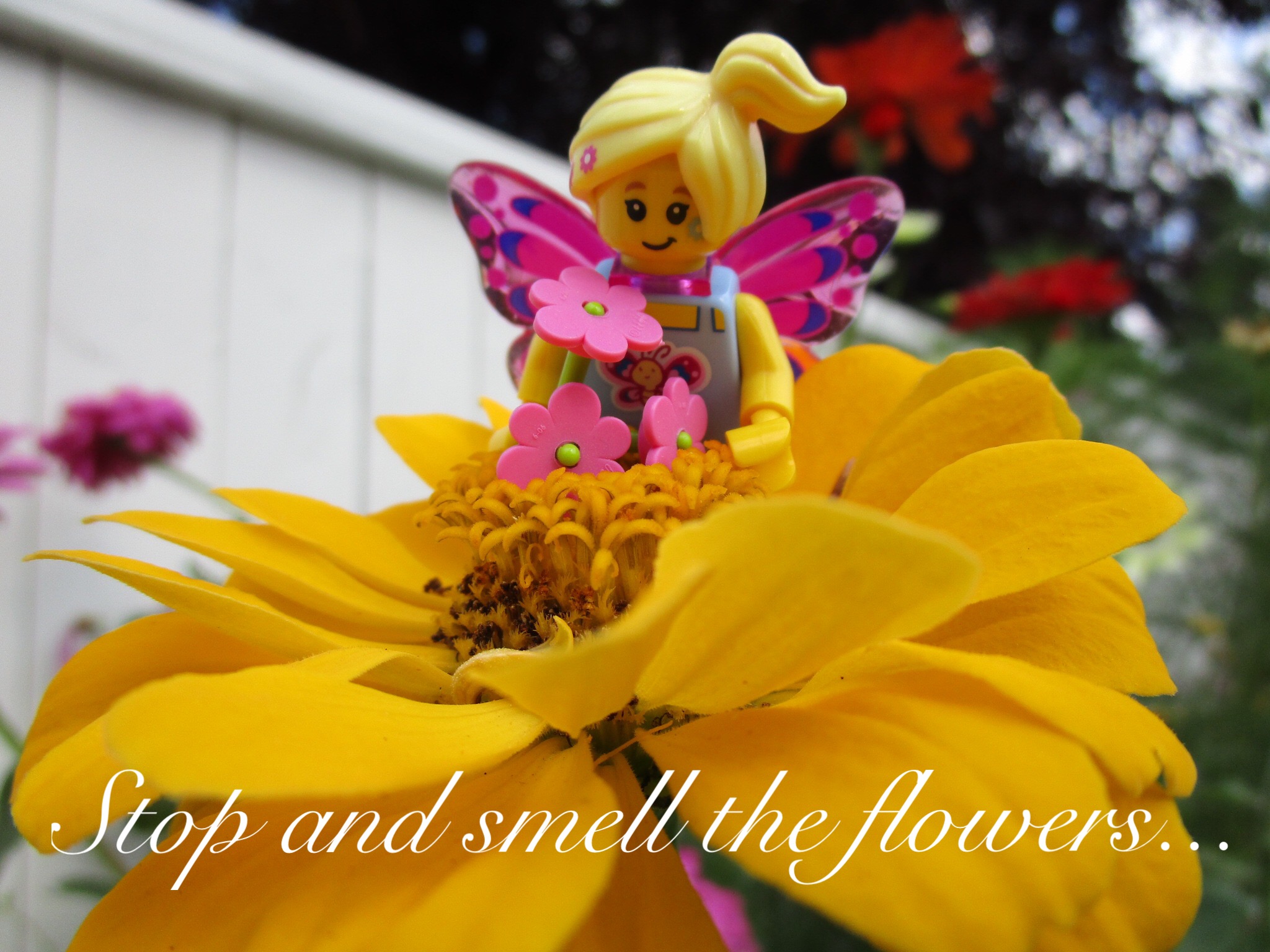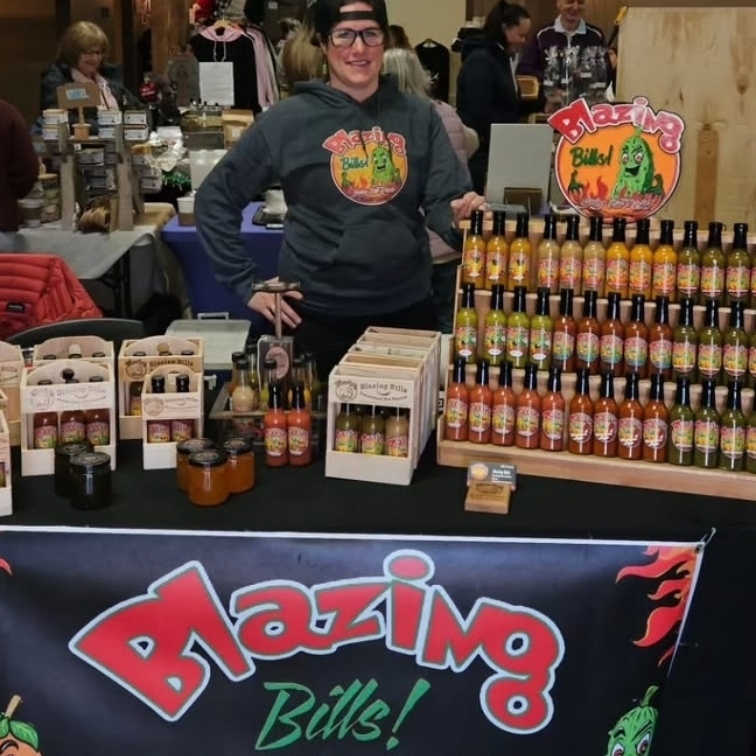Deer-resistant plants: Avoiding destruction in your garden
There are many deer-resistant plants available, including varieties that are native to the Kootenays

A familiar sight across the Kootenays, hungry urban deer are a nuisance for many gardeners. — Photo courtesy Connie/Flickr
The allure of the Kootenays is indisputable—mountain vistas, fresh air, endless outdoor recreational opportunities and friendly communities. What’s not to love? Well, for the gardeners among us, there is most likely one bane to our contented Kootenay lifestyle: deer.
I’m sure many of us have experienced the frustration of finding prized blossoms nibbled off in the night, ripe and ready-to-pick veggies violated and showy shrubs shamelessly devoured by deer. Grrrr! What’s a gardener to do?
While no plant is 100 per cent deer-proof, there are many species of flowers, shrubs, vines and trees that are deer-resistant, including species native to the Kootenay region. According to the Kootenay Native Plant Society, perennials such as aster, milkweed, yarrow, lupine and goldenrod are native to the Kootenays, along with shrubs such as mock orange, Oregon grape and red-flowering currant. Equally important, these species will also attract a diverse array of pollinators throughout the growing season.
Here’s a list of other popular deer-resistant plants that Kootenay gardeners often grow:
- Flowers: cosmos, zinnia, Love-in-a-Mist, snapdragon, peony, dianthus, bleeding heart, daisies, dahlia, aster, marigold, lupin, foxglove, strawflower
- Bulbs: daffodil, Lily-of-the-Valley, allium, lily, crocus, hyacinth, iris
- Trees and shrubs: maple, alder, barberry, birch, dogwood, spirea, willow
Of course, no garden is immune to the occasional nibble. According to the Victoria Master Gardener Association, fawns will try just about anything— much like their human counterparts. In a tough year when food is scarce, deer may even develop a taste for plants they’ve previously left alone.

It's possible to grow beautiful flowers, even with pesky deer around. Here, zinnias, cosmos and marigolds combine to make a colourful floral display that's also deer-resistant. — Photo courtesy Julie Matchett
Here are some other helpful tips to keep in mind:
- The most reliably deer-proof plants are those with strongly scented foliage like lavender, marigolds, peonies and most herbs.
- Fuzzy-leafed plants and plants with silver or grey foliage, such as dusty miller, are unpalatable to deer.
- Deer avoid foliage that is prickly or leathery, such as holly. Strangely, though, deer tend to love roses.
Taking a trip to your local garden centre is a great way to discover what kinds of deer-resistant plants are available in the region. The question, “What kinds of plants will deer stay away from?” is one every garden centre employee has heard and they are very knowledgeable on the subject. Another idea is to talk to fellow gardeners and experts or perhaps join a local garden club—most gardeners are happy to share their tricks and tips with people new to backyard gardening.
Armed with a little bit of knowledge and foresight, planting a beautiful garden that the deer won’t nibble to the ground is possible in the Kootenays.






Comments